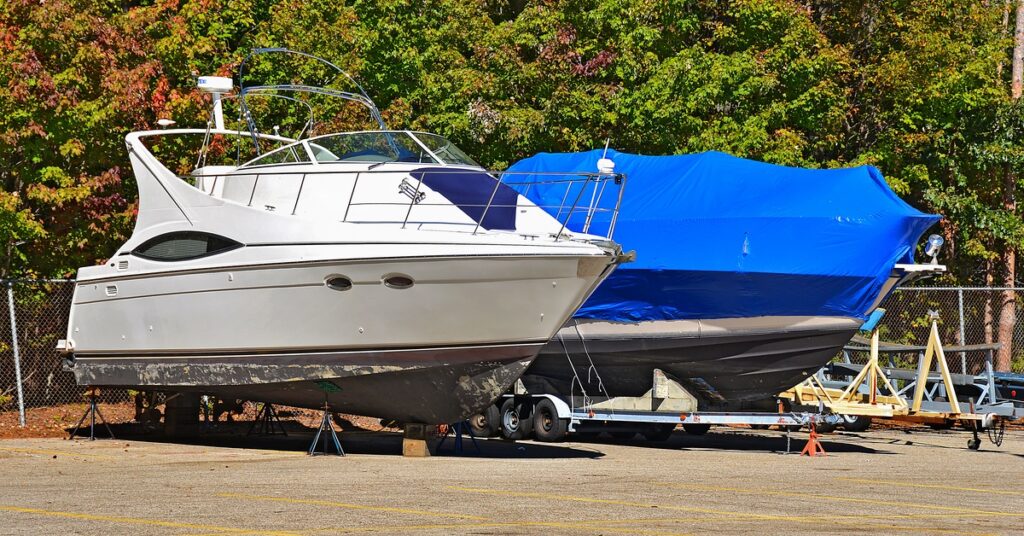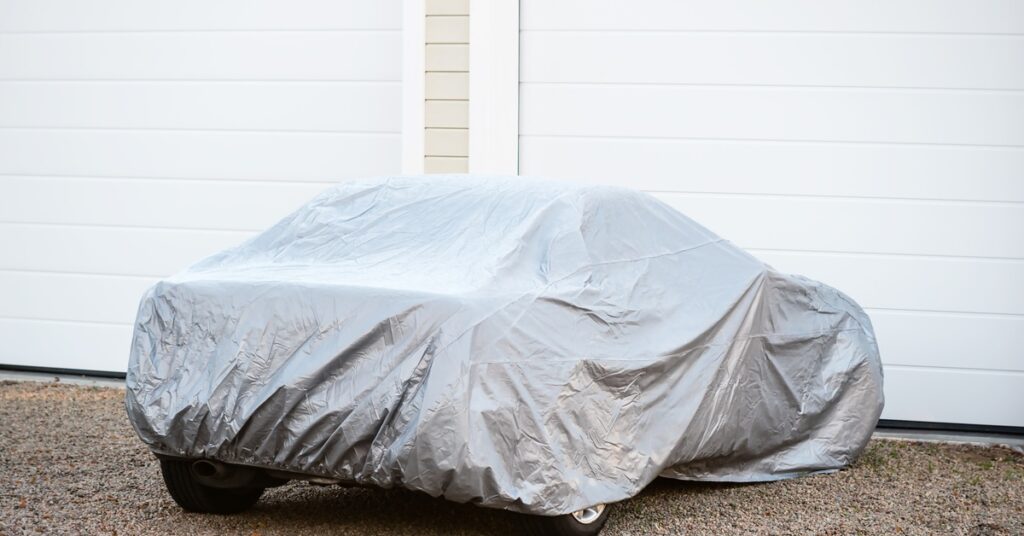Mother Nature doesn’t ask permission before unleashing her fury. Whether you’re facing hurricane season along the coast, tornado alley’s spring storms, or winter’s harsh grip, your valuable vehicles need protection. Proper extreme weather storage preparation can mean the difference between minor inconvenience and devastating financial loss.
The cost of replacing or repairing vehicles damaged by extreme weather far exceeds the investment in proper storage preparation. From saltwater corrosion after hurricanes to hail damage from severe thunderstorms, unprotected vehicles face numerous threats. Let’s explore the essential steps for extreme weather storage prep for your boat, car, and RV.
Assessing Risk Factors
Before diving into storage preparations, evaluate the specific weather threats in your area. Coastal regions face different challenges than inland areas, and northern climates present unique winter storage considerations. Hurricane-prone areas require preparations for high winds, storm surge, and flooding. Tornado-prone regions need protection from hail and debris. Winter weather demands attention to freezing temperatures, ice, and snow loads.
Geographic location determines your primary threats, but don’t overlook secondary risks. A severe thunderstorm can produce golf ball-sized hail hundreds of miles from the nearest tornado. Unusual weather patterns can bring unexpected challenges, so prepare for multiple scenarios rather than focusing solely on the most common local threats.
Preparing Your Boat
Boats face unique challenges during extreme weather storage, particularly from water damage and structural stress. Begin by removing all electronics, valuables, and perishables from the vessel. Electronics are especially vulnerable to moisture and temperature fluctuations, while forgotten food items can attract pests and create unpleasant odors.
Fuel system preparation prevents costly damage from contaminated or stale fuel. Fill the tank completely to prevent condensation, then add fuel stabilizer according to manufacturer instructions. Run the engine briefly to circulate the treated fuel through the system. For extended storage, consider having the fuel system professionally winterized.
The boat’s hull requires special attention depending on your storage method. Boats stored in water need proper dock line arrangement and fender placement to prevent damage from storm surge or high winds. Trailered boats should have the trailer properly supported and the boat secured with additional tie-downs beyond normal transport requirements.
Engine preparation varies between inboard and outboard motors. Inboard engines typically require coolant system flushing and replacement, while outboard motors need lower unit gear oil changes and fogging oil treatment. Remove batteries and store them in a climate-controlled environment, checking and charging them periodically.
Cover selection makes a significant difference in protection quality. Marine-grade covers designed for your specific boat model provide superior protection compared to generic tarps. Ensure the cover allows for air circulation while preventing water infiltration. Improperly installed covers can cause more damage than no cover at all if they trap moisture or flap in high winds.

Preparing Your Car
Automotive extreme weather storage preparation starts with thorough cleaning inside and out. Remove all personal items, food, and anything that could attract pests or create odors. Clean the interior completely, including vacuuming upholstery and wiping down all surfaces. Exterior washing removes salt, dirt, and debris that can cause corrosion during storage.
Battery maintenance prevents the frustration of a dead battery when you need your vehicle again. Disconnect the negative terminal and consider using a battery tender for extended storage periods. Clean battery terminals and apply protectant to prevent corrosion. Store the battery in a cool, dry place if possible.
Tire preparation prevents flat spots and sidewall damage. Inflate tires to the maximum recommended pressure, as they’ll naturally lose pressure over time. For extended storage, consider placing the vehicle on jack stands to remove weight from the tires entirely. If you’re keeping the car on the ground, move it periodically if possible.
Engine preparation depends on storage duration. Short-term storage requires fuel stabilizer and a full tank to prevent condensation. Long-term storage benefits from oil changes before storage, as used oil contains contaminants that can damage engine components. Consider having the cooling system flushed and refilled with fresh coolant, as well.
Preparing Your RV
RVs combine many of the challenges faced by both boats and cars, with additional complications due to their living spaces and complex systems. Begin with the water system, which requires complete draining to prevent freeze damage. This includes the fresh water tank, water heater, and all plumbing lines. Use RV antifreeze in the drain traps and toilet to prevent residual water from freezing.
Propane system preparation involves shutting off all gas appliances and the main propane supply. Check for leaks using soapy water around connections and fittings. Some owners prefer to remove propane tanks entirely for separate storage, while others leave them attached but completely shut off.
The electrical system needs attention beyond just the engine battery. RVs typically have house batteries that power interior systems. Disconnect these batteries and store them in a climate-controlled environment. Cover or disconnect solar panels to prevent overcharging of disconnected batteries.
Interior preparation prevents pest problems and moisture damage. Remove all food items, including canned goods and dry goods that might attract rodents. Clean the refrigerator thoroughly and leave it open with baking soda to absorb odors. Place moisture absorbers throughout the interior to prevent mold and mildew.
Exterior preparation includes checking and sealing all roof seams, windows, and doors. Even small leaks can cause significant damage over extended storage periods. Clean the exterior thoroughly, apply protective wax, and ensure all exterior compartments are properly sealed.

Considering Long-Term Storage
Extended storage periods require additional preparation steps regardless of vehicle type. Insurance considerations become important—contact your insurance company about storage coverage options. Some policies offer reduced rates for stored vehicles, while others require specific storage conditions to maintain coverage.
Keep documentation organized and accessible, including copies of insurance policies, registration, and maintenance records in a waterproof container. Take photographs of your vehicles before storage to document their condition for insurance purposes if needed.
Climate control benefits all stored vehicles but isn’t always practical or affordable. If available, maintain moderate temperatures and humidity levels. For outdoor storage, choose locations with good drainage and natural windbreaks when possible.
Preparing for Emergencies
Develop contingency plans for different emergency scenarios. If severe weather threatens your storage location, know how to quickly access and move your vehicles if necessary. Keep emergency supplies including flashlights, basic tools, and contact information for towing services readily available.
Monitor weather forecasts regularly during storage periods. Modern weather prediction gives several days’ warning for most severe weather events, providing time to take additional protective measures if needed.
Protecting Your Investment
These essential steps for extreme weather storage prep require time, effort, and some financial investment, but the alternative—extensive damage or total loss—makes this preparation invaluable. Each vehicle type presents unique challenges, but following systematic preparation procedures significantly reduces the risk of weather-related damage.
Start your preparation early, before severe weather threatens your area. Emergency preparation done under time pressure often misses important details. Create checklists for each vehicle type to ensure consistent preparation and consider this prep an essential part of responsible vehicle ownership.
If you’re looking for a secure place to store your vehicle in Vero Beach, FL, contact Sunshine Storage. We offer a variety of storage options, including safe outdoor boat parking, with competitive prices and exceptional facilities. Reserve a spot for your car, boat, or RV today!
